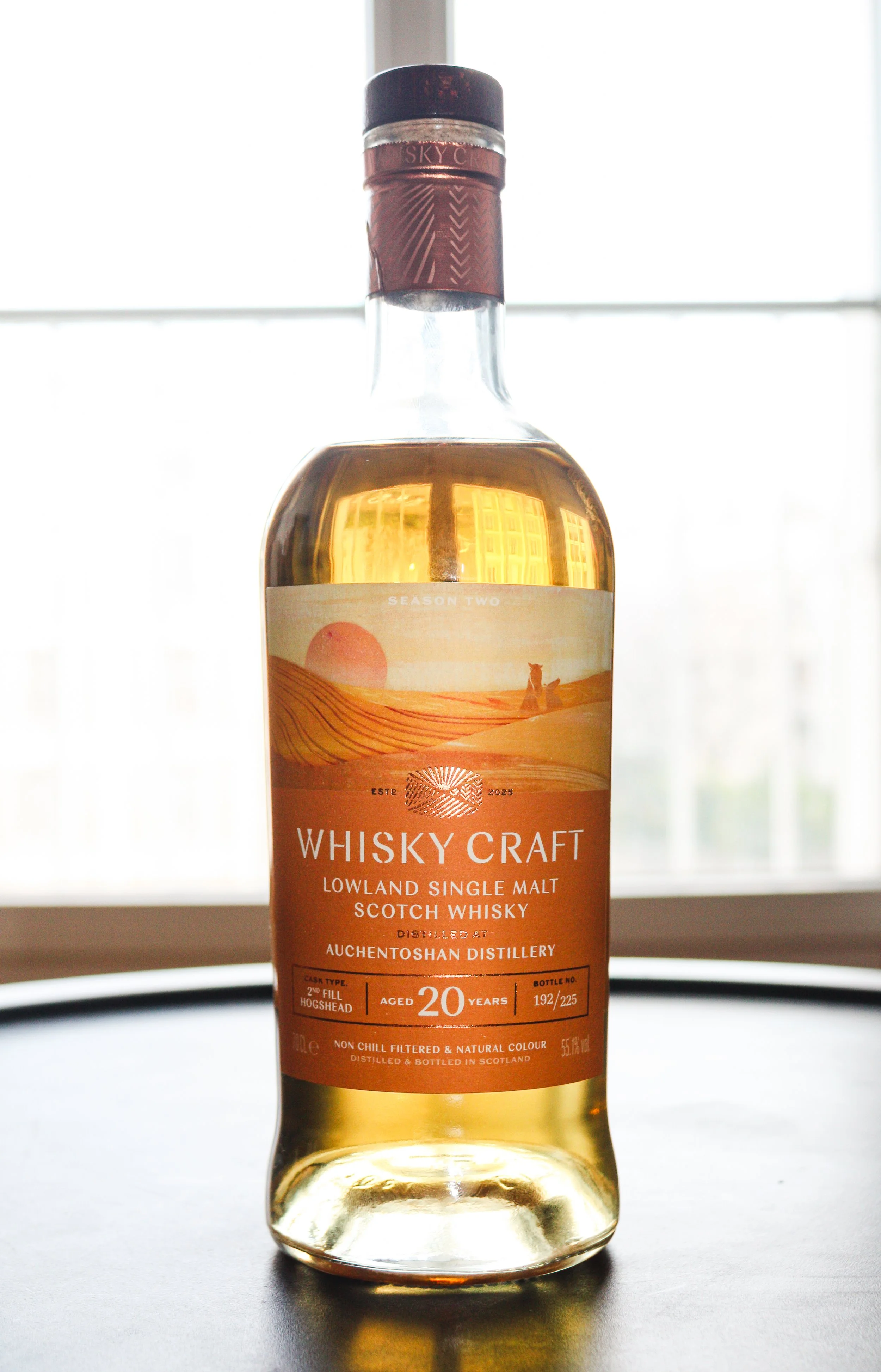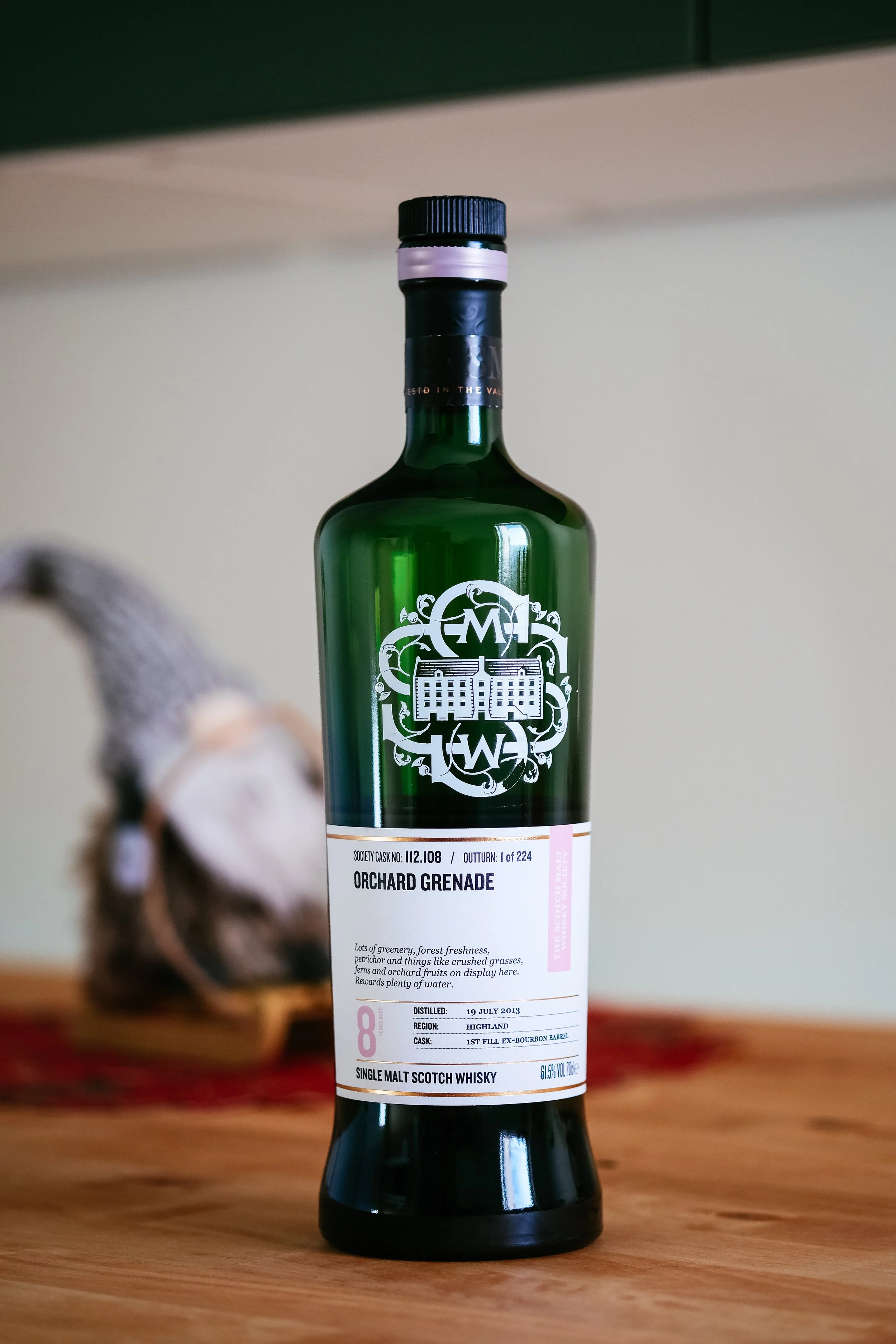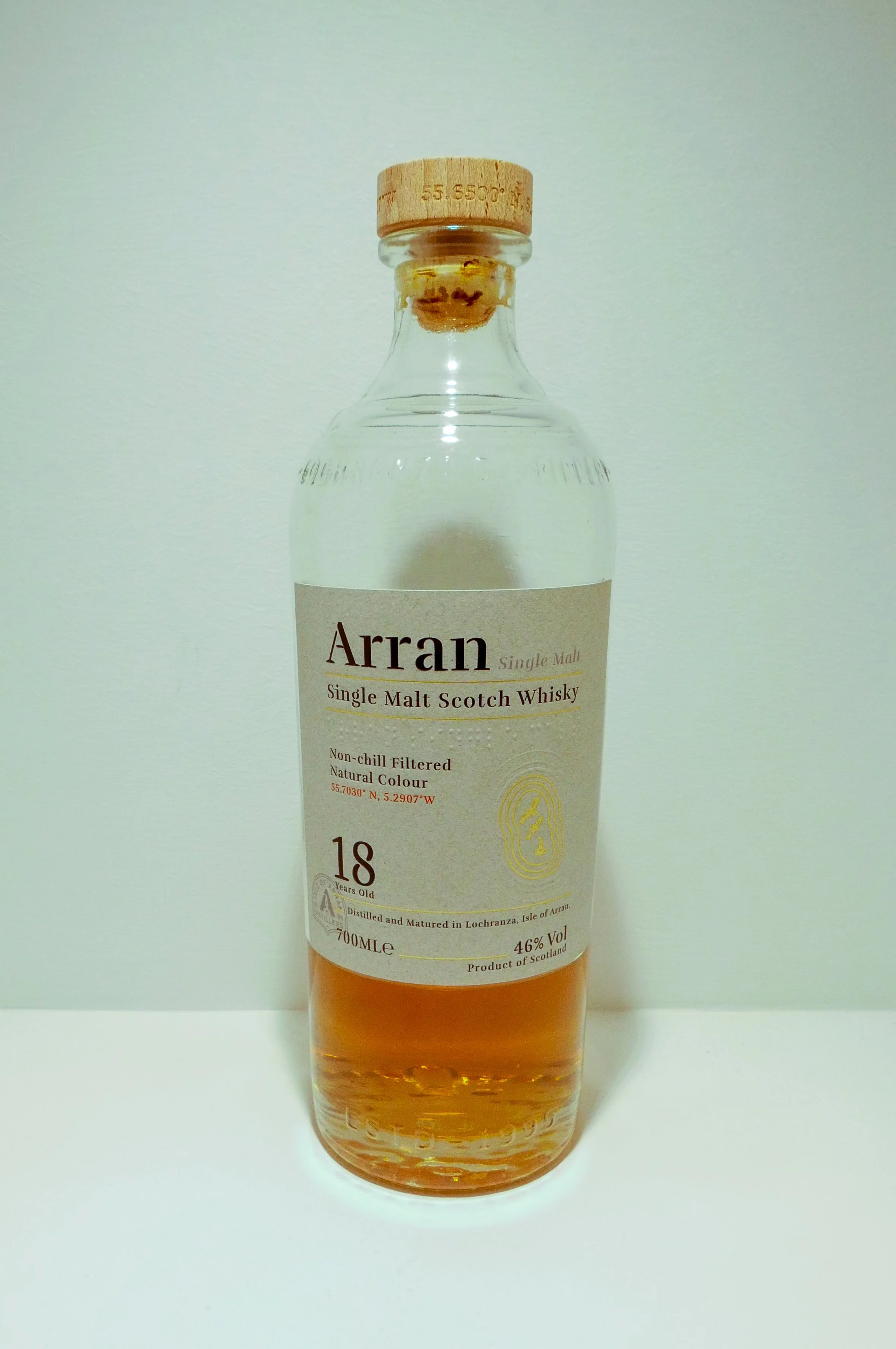Bunnahabhain 18yo Old Particular
Douglas Laing ‘The Peated Version’ | 45.2% ABV
Score: 8/10
Something special.
TL;DR
Folly, but wonderfully so
Pushing the boat out
As a whisky enthusiast, I feel I’ve reached a certain ‘stage’ where my purchases will be guided by a combination of factors, of which ‘value’ and ‘quality’ are the two most important.
While I’m still keen to explore and try both expected and unexpected things that may cross my path, I feel there are a few conditions attached to giving in to that curiosity. For a significant part of my journey, I may have been willing to take a gamble on a cheap bottle of whisky – say anything sub €40/£35, not overly bothered by the risk or chance of it being somewhat of a dud. And don’t get me wrong: there are some absolutely cracking whiskies out there in that (sub) €40 price bracket – the likes of Maclean’s Nose, a (discounted) Inchmurrin 12yo, Campbeltown Loch and Compass Box Orchard House are just a few that immediately spring to mind. But as I progress on my journey I can’t help but feel I’ve reached a crossroad, as the days where I would be willing to take a blind punt on a €35 bottle of whisky are pretty much over.
The reason being quite simply that I don’t have enough cabinet space - nor the patience - to keep sub-par bottles around. And obviously price isn’t the redeeming factor by any means, as I’ve had my fair share of underwhelming more expensive stuff as well. But I feel, up to a certain extent, the old adage of ‘you get what you paid for’ holds quite a bit of merit. The overall reasoning is that I ‘d much rather skip two €35 bottles of mediocrity and spend €70 on something that puts a smile on my face and I’m sure most of you might agree.
Much more interesting and perhaps less clear cut, is doing that same exercise from the exact opposite angle. Would you rather have one - hopefully sublime - bottle of €200 whisky or two or three still very good bottles of €70 - €80? The value for money proposition, in my opinion, is arguably far more unclear and obscure here than discussing whether you should opt for either two absolutely cheap, but very likely also absolutely bland and boring bottles, or rather one that’s the combined price of those and one where you likely be getting some interesting and quality stuff in the glass.
Cue my inner Tom Haverford and ‘treat yourself’. While I do tend to see myself as somewhat of a budget conscious customer (happily ignoring the fact that enjoying whisky as a hobby has very little to do with being budget conscious to begin with), any bottle exceeding a three-digit price tag will be approached with scrutiny and caution.
See, intrinsically, I’m still convinced that no bottle of whisky is worth more than somewhere around €250 to €300. When you only consider quality as a parameter to judge the ‘worth’ or value of whisky, that’s as high as the bar can go. Just my opinion.
Of course there are tons of bottles that are priced well beyond that price point, due to scarcity, desirability, branding, market positioning and status. Does that mean I’ll never be willing to splurge silly amounts of money on a bottle of whisky? At this point in time, for me, it seems unlikely. But of course everything depends on disposable income and while I don’t see myself coughing up several hundreds of my euros, or pounds, or whatever for a bottle of whisky, seven or eight years ago I didn’t see myself spending over a hundred. Three to four years ago I never saw myself spending over €150.
While these still tend to be ‘folly’ purchases - a ‘once in a year’ sort of thing - there remain only a few bottles that have cost me (well) north of €100; literally no more than two or three. My reasoning, or rather self-justification, for these are indeed that as my journey has progressed, developed and evolved, the benchmark or threshold of what whisky should cost in my book has gradually shifted as well: from €40 - €50 to €60 - €70 and now it tends to sit in that anywhere-between-fifty-and-ninety-is-more-or-less-okay. Budget conscious my ass, indeed.
And while I try to convince myself that this pattern here isn’t one of a slippery slope and certain limits - checks and balances will be held in place - there’s no denying that as time and my enthusiasm progresses, the amount of money I’m willing to spend on whisky has increased.
And here lies the twisted reasoning behind the somewhat silly money I threw at today’s bottle; as I have plenty of very decent, but also downright mediocre and also absolutely fantastic whiskies in the €50-€100 range. Why not buy less of those and spend a bit more on something that should be - if price alone is something to go by – on another level.
Review
Bunnahabhain 18yo, Douglas Laing Old Particular ‘The Peated Version’, Single Cask bourbon barrel, DL17755, 2023 bottling, 45.2% ABV
€175 paid (£150)
Obviously I didn’t just blow €175 on the first bottle that crossed my path, I’ve done my homework.
I wanted something that was ‘missing’ from my cabinet in terms of profile first and foremost, from a bottler or brand I’ve come to trust for releasing good quality stuff. Hence why I landed on this 18 year old, bourbon cask matured peated Bunnahabhain from Douglas Laing.
I haven’t had that many bourbon cask matured Bunnas in the past as they tend to focus on sherry cask most of the time, but the few I tried were always interesting and very decent. Also, while I’m not a massive fan of most of Douglas Laing’s Remarkable Regional Malts, I’ve also never had anything from their Old Particular range that felt like a let-down. Overall and even in today’s overheated market I find Douglas Laing, specifically with their Old Particular range, manages to offer good-to-excellent quality at fair prices. And if you keep in mind what other releases of 18 year old Islay whiskies tend to sell for these days, official releases and indies alike, €175 (£150) seems well in check and downright reasonable. And that kids, is how I justified parting ways with €175 of my hard-earned and brought this puppy home.
Score: 8/10
Something special.
TL;DR
Folly, but wonderfully so
Nose
Glencairn: Honey and peat smoke, with an ashy note underneath. Lemon, orange zest and lemon sherbet and vanilla. There’s floral-herbal-greenhouse notes too of geranium and rhubarb. Rich, yet subtle and almost delicate. ‘Lovely’ doesn’t even begin to cover things.
1920 blender’s glass (pictured): Absolutely beautiful! Honey, heather and grass, peat, floral notes, vanilla, white chocolate and coconut – and everything is delivered in near perfect harmony. Give it more time and a medicinal note joins the party. And what a party this is!
Palate
Glencairn: peat and smoke notes are now upfront and dominant on a dry, woody and medium-full body. Despite the peat and smoke it never becomes overly heavy as there’s plenty of lightness to it as well, with vanilla and honeysuckle which are in turn balanced out by hints of oak and a nutty element. As we dive into the finish things turn quite ashy.
1920 blender’s glass: a very mellow ashy note is the first thing I pick up. The build up and delivery is again very harmonious as that ashy peaty note is soon followed - and countered - by an equally mellow melange of smoke, honey, vanilla and a gentle umami note. Surprisingly, there’s a grainy note mid palate, while the texture is much like in the Glencairn; slightly woody, dry and medium bodied and also the finish is dominated by the ashy note.
The Dregs
I’ve done a head to head of a whisky in both a Glencairn and a blender’s glass before and overall I found there’s a difference in the experience of nosing and tasting, but this time I do feel as if that fancy glassware didn’t just offer a different experience, but also improved it. More nuances, more layers, more balance, more well - everything.
Nothing vastly different - and by no means does sipping from the Glencairn seem sub-par or anything - but there’s nonetheless a subtle yet noticeable improvement with the focus of the blender’s glass. Let’s say that in the Glencairn, this baby cruises its way to a firm and well deserved 8/10. In the blender’s glass I’m inclined to add at least half a point extra. The almost spectacularly low, concentrated ABV from this single cask actually sits quite well with this whisky. I can only guess what happened with this cask. A rather drafty one, perhaps, or located somewhere in the warehouse where there’s some dramatic variation in temperature? Whatever caused it, it did a decent job, but I initially didn’t pick up on the rather low ABV when buying the bottle and am happy to report my concerns when finding out about it proved unjustified.
Unless I land a big promotion, or am the sole beneficiary of a wealthy Nigerian prince (if so, please don’t hesitate and write to earie@dramface.com), these purchases will remain an occasional folly. Partly for all the reasons I explained above; partly because I also dread the day I’m spending €150 or even more on something that’s a downright disappointment. The value for money factor still impacts my enjoyment of a whisky, and while I came prepared when buying this one, it still remains a bit of a calculated guess.
I’ll argue that this one indeed offers excellent value (much like Wally enthused about the equally pricey 18 yo from Bruichladdich), there’s no way I’ll be making a habit of buying releases like these in the short term as they should remain the exception to the rule.
Or so I’m telling myself today.
Score: 8/10
Tried this? Share your thoughts in the comments below. EA
-
Dramface is free.
Its fierce independence and community-focused content is funded by that same community. We don’t do ads, sponsorships or paid-for content. If you like what we do you can support us by becoming a Dramface member for the price of a magazine.
However, if you’ve found a particular article valuable, you also have the option to make a direct donation to the writer, here: buy me a dram - you’d make their day. Thank you.
For more on Dramface and our funding read our about page here.






































